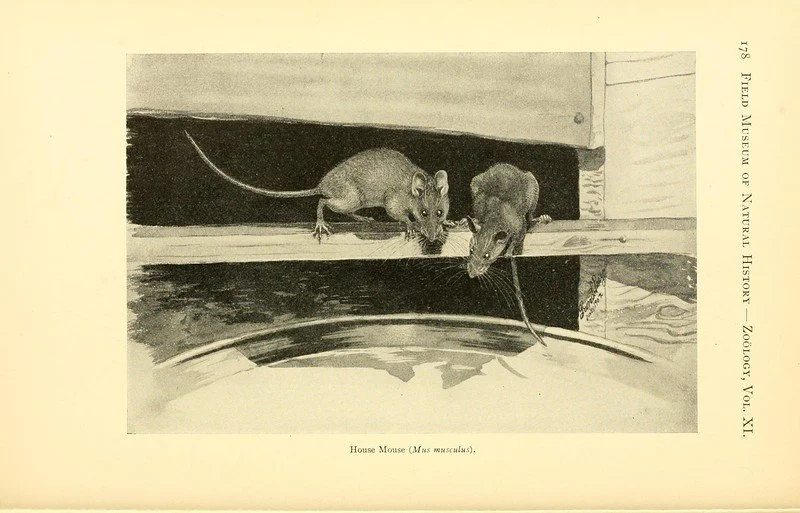From The mammals of Illinois and Wisconsin, 1912
Courtesy of the Biodiversity Heritage Library
Wind licks the arbor vitae; it bends, then tremors
[I was so worried about her.] Heavy exhalation
from the next room. Like patches of paint along
a rusted pipe. Mice have a range
of facial expressions including pain, fear,
and disgust. Excuse me.
Panting, now, the heaving of labor-
ed breath. [She had fever of 103
and was like barely staying awake
it was emotional day.]
In ancient Egypt,
a mother would consume a mouse
when her infant was ill
to offer healing powers to her baby.
In the Victorian era, fried mice were served
to children to prevent bed-wetting.
A grunt, a whoa. The arbor vitae, in sway.
Breathing is easier if the ear is gently pulled
upwards and outwards. Like mold,
scattered meadow flowers. [I didn’t
get a lot of pictures.]
The term knock-out mouse describes
a mouse who had an existing gene
“knocked out”—replaced with
or disrupted by an artificial
piece of DNA. Some researchers
name these resulting mouse models
after the inactive gene—others
by characteristics or behaviors: “Methuselah”
for a gene involving longevity, “Frantic,”
for anxiety. “Target” for the exceptional
talent who stands out amongst her peers.
A burst of short, rapid breaths, a piston,
a tire leaking air.
Wind then whisks
the Japanese maple. In accord with suffering.
Oh god, whew.
